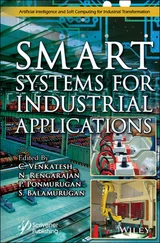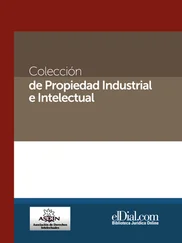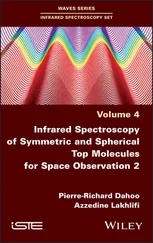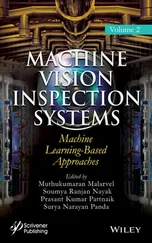1 1 de Castro, M.L. (2011). Cosmetobolomics as an incipient ‘‐omics’ with high analytical involvement. TrAC Trends in Analytical Chemistry 30 (9): 1365–1371.
2 2 Rajput, N. (2016). Cosmetics market by category (skin & sun care products, hair care products, deodorants, makeup & colour cosmetics, fragrances) and by distribution channel (general departmental store, supermarkets, drug stores, brand outlets)‐global opportunity analysis and industry. Forecast: 2014–2022.
3 3 Zota, A.R. and Shamasunder, B. (2017). The environmental injustice of beauty: framing chemical exposures from beauty products as a health disparities concern. American Journal of Ostetrics and Gynaecology 217 (4): 418–421.
4 4 Shankar, P.R. and Subish, P. (2016). Fair skin in South Asia: an obsession? Journal of Pakistan Association of Dermatology 17 (2): 100–104.
5 5 Dadzie, O.E. and Petit, A. (2009). Skin bleaching: highlighting the misuse of cutaneous depigmenting agents. Journal of the European Academy of Dermatology and Venereology 23 (7): 741–750.
6 6 Traore, A., Kadeba, J.C., Niamba, P. et al. (2005). Use of cutaneous depigmenting products by women in two towns in Burkina Faso: epidemiologic data, motivations, products and side effects. International Journal of Dermatology 44: 30–32.
7 7 Karnani, A. (2007). Doing well by doing good—case study:‘Fair & Lovely’whitening cream. Strategic Management Journal 28 (13): 1351–1357.
8 8 Philips, A. (2004). Gendering colour: Identity, femininity and marriage in Kerala. Anthropologica: 253–272.
9 9 Peltzer, K., Pengpid, S., and James, C. (2016). The globalization of whitening: prevalence of skin lighteners (or bleachers) use and it's social correlates among university students in 26 countries. International Journal of Dermatology 55 (2): 165–172.
10 10 Landau, M. (2007). Exogenous factors in skin ageing. In Environmental Factors in Skin Diseases (Vol. 35, pp. 1‐13). Karger Publishers.
11 11 Hayflick, L. and Moorhead, P.S. (1961). The serial cultivation of human diploid cell strains. Experimental Cell Research 25 (3): 585–621.
12 12 Libertini, G. (2019). Ageing definition. In: Encyclopedia of Gerontology and Population Aging (eds. D. Gu and M.E. Dupre), 1–10. Cham: Springer International Publishing.
13 13 Kirkwood, T.B. and Austad, S.N. (2000). Why do we age? Nature 408 (6809): 233–238.
14 14 Jabłońska‐Trypuć, A., Krętowski, R., Kalinowska, M. et al. (2018). Possible mechanisms of the prevention of doxorubicin toxicity by cichoric acid—antioxidant nutrient. Nutrients 10 (1): 44.
15 15 Gu, Y., Han, J., Jiang, C., and Zhang, Y. (2020). Biomarkers, oxidative stress and autophagy in skin ageing. Ageing Research Reviews 101036.
16 16 Arda, O., Göksügür, N., and Tüzün, Y. (2014). Basic histological structure and functions of facial skin. Clinics in Dermatology 32 (1): 3–13.
17 17 Eckhart, L. and Zeeuwen, P.L. (2018). The skin barrier: Epidermis vs environment. Experimental Dermatology 27 (8): 805–806.
18 18 Parrado, C., Mercado‐Saenz, S., Perez‐Davo, A. et al. (2019). Environmental stressors on skin ageing. Mechanistic Insights. Frontiers in Pharmacology 10.
19 19 Rittié, L. and Fisher, G.J. (2015). Natural and sun‐induced ageing of human skin. Cold Spring Harbour Perspectives in Medicine 5 (1): a015370.
20 20 Olovnikov, A.M. (1973). A theory of marginotomy: the incomplete copying of template margin in enzymic synthesis of polynucleotides and biological significance of the phenomenon. Journal of Theoretical Biology 41 (1): 181–190.
21 21 Watson, J.D. (1972). Origin of concatemeric T7DNA. Nature: New Biology 239 (94): 197–201.
22 22 Murphy, M.P. (2009). How mitochondria produce reactive oxygen species. Biochemical Journal 417 (1): 1–13.
23 23 Hayyan, M., Hashim, M.A., and AlNashef, I.M. (2016). Superoxide ion: generation and chemical implications. Chemical Reviews 116 (5): 3029–3085.
24 24 Devasagayam, T.P.A., Tilak, J.C., Boloor, K.K. et al. (2004). Free radicals and antioxidants in human health: current status and prospects. Japi 52 (794804): 4.
25 25 Fisher, G.J., Quan, T., Purohit, T. et al. (2009). Collagen fragmentation promotes oxidative stress and elevates matrix metalloproteinase‐1 in fibroblasts in aged human skin. The American Journal of Pathology 174 (1): 101–114.
26 26 Birkedal‐Hansen, H.W.G.I., Moore, W.G.I., Bodden, M.K. et al. (1993). Matrix metalloproteinases: a review. Critical Reviews in Oral Biology and Medicine 4 (2): 197–250.
27 27 Forrester, S.J., Kikuchi, D.S., Hernandes, M.S. et al. (2018). Reactive oxygen species in metabolic and inflammatory signaling. Circulation Research 122 (6): 877–902.
28 28 Haas, R.H. (2019). Mitochondrial dysfunction in aging and diseases of aging. Biology 8: 48.
29 29 Wiley, C.D., Velarde, M.C., Lecot, P. et al. (2016). Mitochondrial dysfunction induces senescence with a distinct secretory phenotype. Cell Metabolism 23 (2): 303–314.
30 30 Serrano, M., Lin, A.W., McCurrach, M.E. et al. (1997). Oncogenic ras provokes premature cell senescence associated with accumulation of p53 and p16INK4a. Cell 88 (5): 593–602.
31 31 Ghosh, K. and Capell, B.C. (2016). The senescence‐associated secretory phenotype: critical effector in skin cancer and ageing. Journal of Investigative Dermatology 136 (11): 2133–2139.
32 32 Smogorzewska, A. and de Lange, T. (2002). Different telomere damage signalling pathways in human and mouse cells. The EMBO Journal 21 (16): 4338–4348.
33 33 Munro, J., Barr, N.I., Ireland, H. et al. (2004). Histone deacetylase inhibitors induce a senescence‐like state in human cells by a p16‐dependent mechanism that is independent of a mitotic clock. Experimental Cell Research 295 (2): 525–538.
34 34 Kligman, L.H. (1986). Photoaging: manifestations, prevention, and treatment. Dermatologic Clinics 4 (3): 517–528.
35 35 Rhodes, A.R., Albert, L.S., Barnhill, R.L., and Weinstock, M.A. (1991). Sun‐induced freckles in children and young adults. A correlation of clinical and histopathologic features. Cancer 67 (7): 1990–2001.
36 36 Fisher, G.J., Datta, S.C., Talwar, H.S. et al. (1996). Molecular basis of sun‐induced premature skin ageing and retinoid antagonism. Nature 379 (6563): 335–339.
37 37 Kim, H.H., Lee, M.J., Lee, S.R. et al. (2005). Augmentation of UV‐induced skin wrinkling by infrared irradiation in hairless mice. Mechanisms of Ageing and Development 126 (11): 1170–1177.
38 38 Hatsukami, D.K., Stead, L.F., and Gupta, P.C. (2008). Tobacco addiction. The Lancet 371 (9629): 2027–2038.
39 39 Ernster, V.L., Grady, D., Miike, R. et al. (1995). Facial wrinkling in men and women, by smoking status. American Journal of Public Health 85 (1): 78–82.
40 40 Yin, L., Morita, A., and Tsuji, T. (2003). Tobacco smoke extract induces age‐related changes due to modulation of TGF‐β. Experimental Dermatology 12: 51–56.
41 41 Krutmann, J., Bouloc, A., Sore, G. et al. (2017). The skin ageing exposome. Journal of Dermatological Science 85 (3): 152–161.
42 42 Schikowski, T. and Hüls, A. (2020). Air pollution and skin aging. Current Environmental Health Reports 7 (1).
43 43 Brinkmann, V., Ale‐Agha, N., Haendeler, J., & Ventura, N. (2019). The Aryl Hydrocarbon Receptor (AhR) in the Aging Process: Another Puzzling Role for This Highly Conserved Transcription Factor. Frontiers in Physiology, 10.
44 44 Singh, J., Sharma, D., Kumar, G., and Sharma, N.R. (eds.) (2018). Microbial Bioprospecting for Sustainable Development. Springer.
45 45 Waites, M.J., Morgan, N.L., Rockey, J.S., and Higton, G. (2009). Industrial Microbiology: An Introduction. Wiley.
46 46 Sanghvi, G., Patel, H., Vaishnav, D. et al. (2016). A novel alkaline keratinase from Bacillus subtilis DP1 with potential utility in cosmetic formulation. International Journal of Biological Macromolecules 87: 256–262.
Читать дальше











